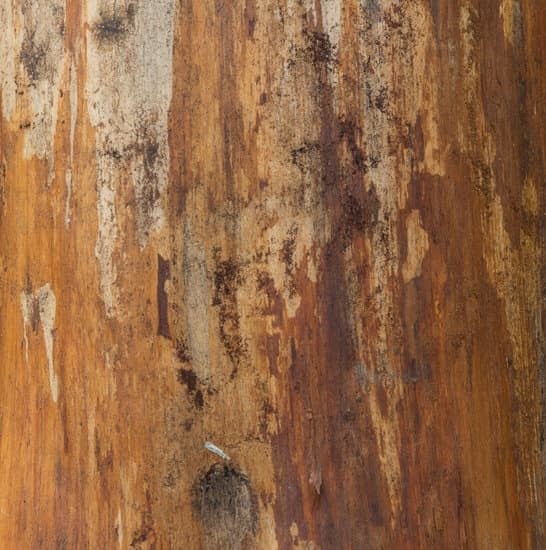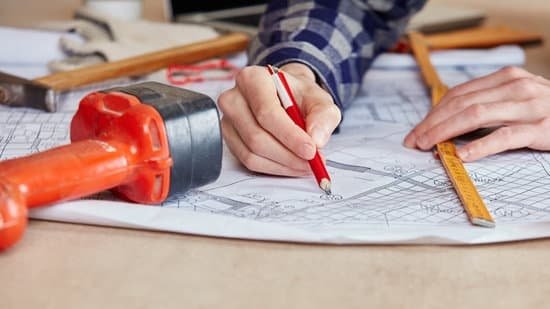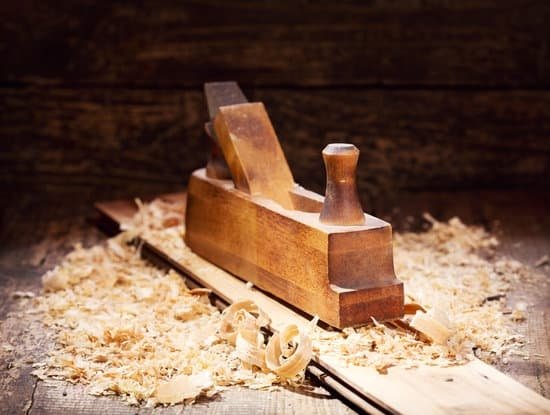Introduction
If you are looking for free woodworking plans to build a desk organizer, you have come to the right place! Whether you’re looking for something simplistic or more complex, this guide will provide you with several great resources to help you get started. Not only will we provide detailed steps for creating your dream desk organizer, but also suggest tools and supplies needed which can be purchased from your local hardware store. Additionally, suggestions on customizing the design of your desk organizer and tips regarding woodworking techniques will be included too. So let’s start building a beautiful and functional desk organizer that will keep your workspace clean and organized.
Benefits of Woodworking Projects for Desk Organizers
Woodworking projects for desk organizers are a great way to put your DIY skills to the test and bring something creative and beautiful into your workspace. Not only are they fun to make, but they offer many benefits! By making your own desk organizer, you can customize it to fit your exact needs. You can pick any kind of wood that matches the look of your office, choose any type of paint or stain for an aesthetically pleasing finish, and even carve unique designs for a personalized touch. Crafting a desk organizer from wood is also very satisfying ” creating something entirely from scratch has a special feeling of accomplishment. In terms of practical benefits, custom-made wooden organizers are also more durable than their store-bought counterparts. With the proper care and maintenance, it can last for decades! Finally, making a wooden organizer is often less expensive than buying one from a store. The experience of constructing it yourself makes the cost worthwhile!
What You Should Know Before Building a Desk Organizer
Building a desk organizer is an excellent way to add style and practical storage space in any workspace. Before building a desk organizer, there are a few things to consider to make sure the project is completed efficiently and successfully. First, you should decide on the size of your desk organizer. This will depend on the size of your desktop and how much storage space you need for supplies. You should also decide if you want your desk organizer to be open or closed so that you can determine if it requires doors or drawers. Additionally, consider what type of material you would like to use ” wood, metal, or plastic ” as well as what finishing touches will make the most appealing desk organizer. Lastly, select plans that cater toward your skill level so that you can have confidence in completing your task with ease!
Materials and Tools Required for Building a Desk Organizer
Materials needed to build a desk organizer include wood, screws, nails, glue, sandpaper, assorted decorative items such as paint or stain, and hinges. The type of wood used typically depends on personal preference and the look you want to achieve. Pine is inexpensive and relatively easy to work with while more expensive hardwoods like oak or cherry might bring out a more traditional feel.
Tools required for building a desk organizer include a drill, saws (circular saw, jigsaw or handsaw), measuring tape, hammer or screwdriver for nailing and assembling components together. An orbital sander may also be handy for smoothing rough edges. Some people also choose to use clamps when applying glue for additional stability when constructing the pieces. Additionally, depending on the design chosen or created additional tools such as a router may be necessary to cut slots or groove joints in the wood.
Step-by-Step Guide for Building a Desk Organizer
1. Start by gathering the supplies that you’ll need to build your desk organizer: wood, glue, screws, saw blade, and sandpaper.
2. Begin by cutting pieces of wood to the desired dimensions for the desk organizer. Be sure to measure twice and cut once!
3. When cutting the pieces for the desk organizer, consider using dovetails or rabbets in order to ensure tight joints. Alternatively, pocket holes are a great option if you’re comfortable with power tools and have access to a jigsaw or drill press.
4. Once all of the pieces have been cut to size, secure them together using screws and/or glue. Glue should be used liberally yet sparingly – use enough glue to make sure that everything is secure but don’t overdo it as too much can weaken the joints or compromise the overall integrity of your construction job.
5. Sand down any rough edges created during cutting so that they are smooth and flush with the surrounding woodwork. This will also create a more aesthetically pleasing finished product once painted or stained!
6. Paint or stain your desk organizer according to preference; finishing touches may include decorative knobs on drawers, etched patterns on top surfaces, and faux-woodgrain showcases on shelves and dividers. Be creative with color combinations and décor items – be sure to show off your unique style!
7. Following completion of decorating steps, adhere felt strips or other materials chosen to protect any surfaces liable to damage from items placed inside of your newly created desk organizers!
10 Easy and Free Woodworking Plans for Desk Organizer Projects
1) Make a DIY Desk Organizer: This easy project will help you organize your desk in no time! With minimal supplies and tools, you can easily make a desk organizer that will keep everything looking neat. Choose from a range of materials, such as wood or plastic, and make sure to measure the dimensions of your desk beforehand so that you get the perfect fit.
2) Create a Magnetic Wall-mounted Desk Organizer: If your desk doesn’t offer enough storage space, then this magnetic wall-mounted desk organizer might be just what you need. You can customize its look with various colors and shapes of magnets, depending on your style preference. Plus, it also allows for easy access to all of your stationery or other items within reach!
3) Construct a Wooden Pencil Holder: If you’re ever looking for an innovative way to store various pens and pencils, then this is the perfect idea! All you need to craft this handy pencil holder is some wooden boards cut into specific measurements with screws and glue included. When done correctly this will become an eye-catching addition to your workspace too!
4) Build Storage Shelves Above Your Desk: Maximize unused spaces by building simple shelving units above your workspace. Cut to size pieces of wood attach them together for sturdy shelves that won’t buckle under pressure. And don’t forget to paint them in fun colors so that they can become part of the décor!
5) Put Together a Letter Sorter Painted in Bright Colors: If you find yourself constantly dealing with stacks of incoming mail, try making a letter sorter painted in bright colors instead of relying on expensive plastic versions; this project involves minimal tools and supplies (just cut pieces of plywood & attach them with screws/ nails). A few coats of paint are optional but recommended if you want it to really stand out!
Tips for Creating a Space-Saving Desk Organizer
When creating a desk organizer, the goal should be to create a space-saving solution that maximizes the use of available surface area. To accomplish this goal, consider a few tips when designing your desk organizer:
1. Choose furniture and materials that are lightweight and easy to move. This will make it easier to set up and take down your desk organizer as needed.
2. Keep shelves, drawers, and other compartments tall but narrow. Utilizing vertical space can help save on necessary surface area for your desk space.
3. Use dividers inside of drawers or cabinets to better organize items so you don’t have to rifle through them later on. Additionally, try using clear plastic bins with labels for stackable storage in the compartments that give quick access to smaller items and supplies like pens, paperclips, scissors, etc.
4. Consider removable parts ” hooks or hanging baskets ” which can provide extra storage when needed but be tucked away when not in use so they don’t take up needed surface area on your workspace.
5. Make sure that any desktop organizers are adjustable so they can accommodate different sized supplies (like notebooks and folders) while still being slim enough not to take up too much surface real estate
Troubleshooting Common Issues with Desk Organizer Projects
Desk organizer projects can be tricky and even frustrating due to the high level of precision required for accurate fitment. However, with a few essential tips, you can make sure your desk organizer project is successful and hassle-free. Before starting your project, consider these tips:
• Measure twice, cut once. This old adage has been true since carpentry began; double checking measurements can help ensure no mistakes are made. Make sure to follow the manufacturer’s instructions exactly, as cutting pieces too small or too large will affect the fitment of the desk organizer.
• Consider using dowel pins for added stability. If you’re worried about the solidity of your joints, consider using dowel pins on possible stress points. Dowel pins provide extra strength making them great for tasks such as this; they are also inexpensive and easy to find at any hardware store.
• Test fit all components before gluing or screwing in place. To ensure that all parts have been properly measured and no mistakes were made with sizing, test fitting of all components is recommended before gluing or screwing into place. This allows you to correct any errors quickly and without worry of permanently damaging parts of the project.
• Make extra pieces just in case something goes wrong down the road. While not absolutely necessary, it doesn’t hurt to make extras of some pieces in case something happens further down the line when assembling your desk organizer; running out of materials mid-project is never fun! If nothing else, if done correctly you’ll end up with a second piece which could be used for another storage solution (or sold back)!
Reviewing Different Woodworking Styles for Desk Organizers
Desk organizers come in a variety of woodworking styles based on the desired look and functionality wanted for the particular desk. Shaker-style organizers are popular because of their classic, rectangular design that is still possible to customize with shelves, drawers, and compartments. Contemporary projects often include more curved shapes adorned with patterns or colors to match modern home decor. Craftsman-style organizers feature thicker legs, wider edges, long cookieserates drawers, and less embellishments than other styles. For desks with limited space, a mid-century style may be the best choice as it consists of sleek lines, simple handles, and narrow doors that finish its minimalist look. Overall, enjoying free woodworking plans available online is a great way to find the perfect desk organizer for any space!
Depending on an individual’s woodworking skillset and preference for aesthetics there are endless possibilities for creating customized desk organizers from free woodworking plans online. Those new to woodworking can choose projects with simple joinery techniques like dovetailing or mortise-and-tenon systems. Experienced craftsmen can bring their vision to life by picking complex builds involving intricate cuts and joints. Carpenters who prefer traditional looks may construct a roll top desk with flat panels coated in a warm walnut stain while modernists may favor clean centerlines highlighted in exotic woods like teak or mahogany. With creative imagination and skill level taken into consideration anyone can locate unique designs that offer endless opportunities to personalize a workspace!
Conclusion
Building a desk organizer is an ideal way to add some style and organization to any workspace. Using free woodworking plans, you can customize it to your needs and space constraints, ensuring that it is perfect for every user. When selecting the materials for the project, consider durability and functionality before considering looks. While aesthetics are important, it should be secondary to the purpose of a desk organizer”providing efficient storage and writing work surfaces. Before starting construction, it is essential that all measurements are accurate both in dimension and angle. Depending on size and complexity, the desk organizer can be constructed from wood such as cedar or plywood. Plywood may offer additional strength and stability for larger pieces but will sacrifice some visual information when finished. Regardless of choice, use quality screws and glue as necessary to give lasting protection against daily wear-and-tear. After sanding all edges smooth with sandpaper grit based on results upon test samples, use a protective sealant or top coat to provide further weatherproofing capability to the project’s completion. With free woodworking plans, you can easily design a custom desk organizer that is both stylish and functional!

Hi everyone! I’m a woodworker and blogger, and this is my woodworking blog. In my blog, I share tips and tricks for woodworkers of all skill levels, as well as project ideas that you can try yourself.





